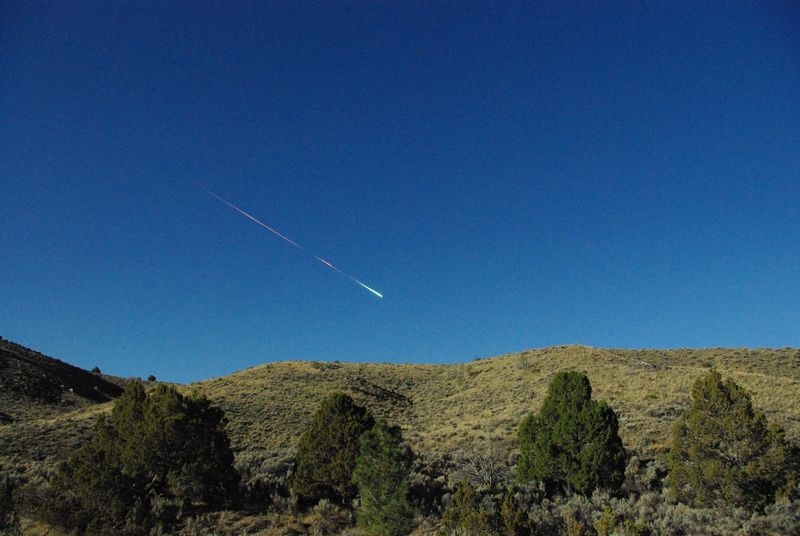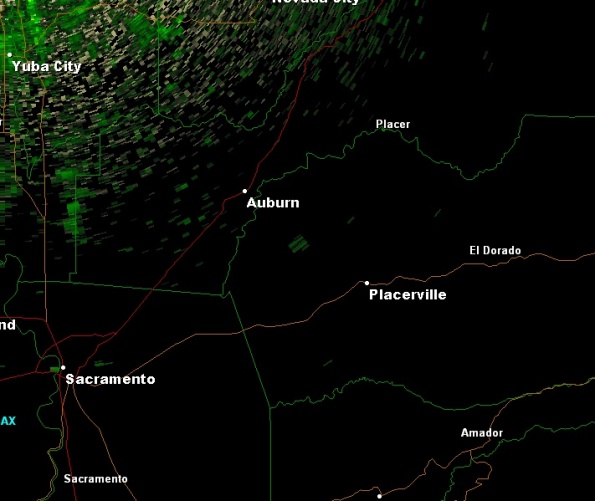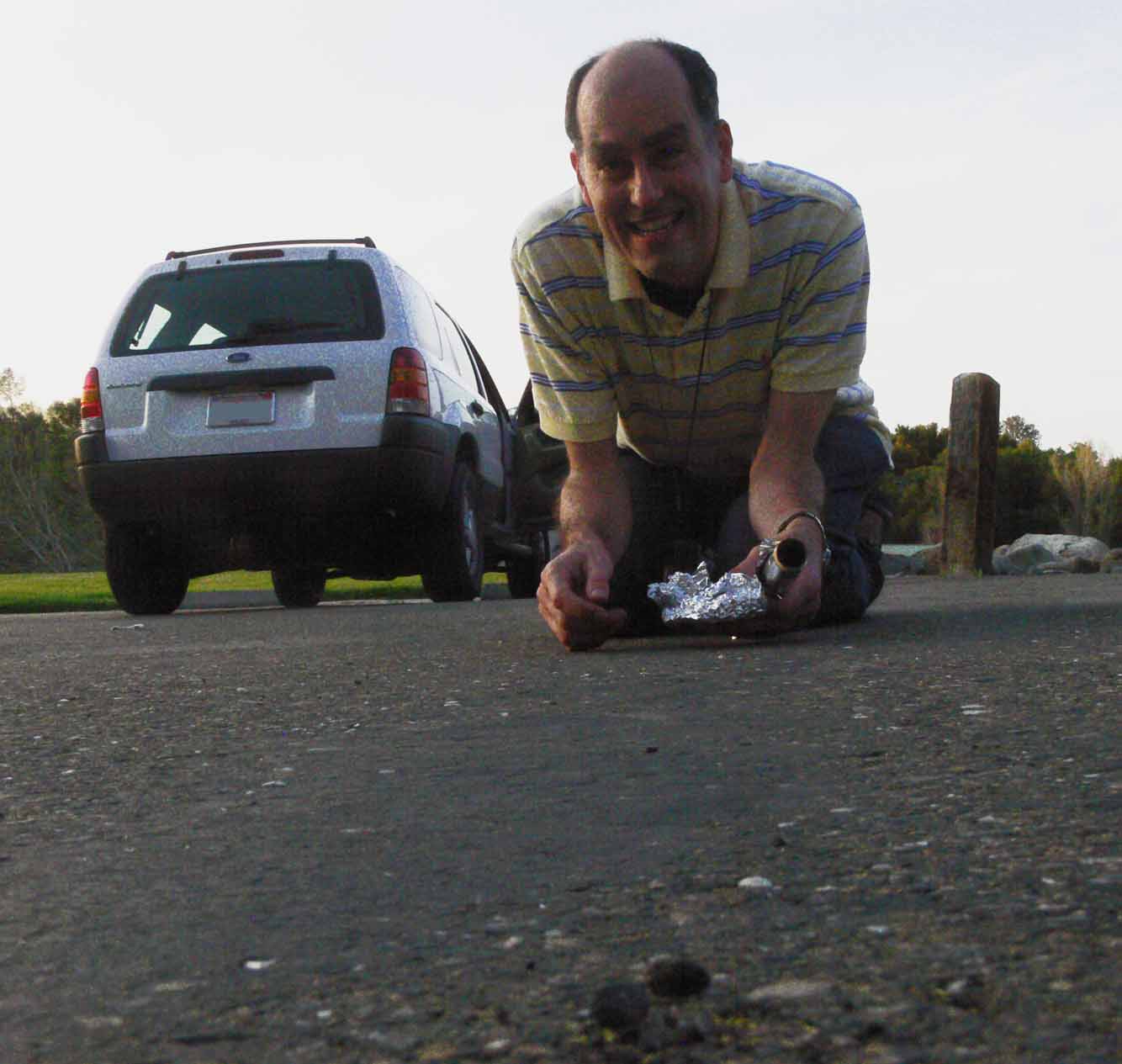FROM THE UNIVERSITY OF WESTERN ONTARIO FIREBALL CAMERA NETWORK-ORANGEVILLE CAMERA-~6:00 P.M. Est 14DEC2011
University of Western Ontario astronomers get rare video of meteor’s fall near Toronto
Astronomers from the University of Western Ontario have captured on video, a relatively rare occurrence — a meteor, estimated to be 4.5 billion years old, as it falls from the evening sky just outside of Toronto.The bright fireball or meteor travelled through the evening sky east of Toronto on Monday and was captured by a highly advanced video surveillance system from the university.
Six cameras from Western’s Southern Ontario Meteor Network recorded a slow-moving fireball, estimated to be no bigger than a basketball, at 6:04 p.m. It first entered the atmosphere at a shallow angle of 25 degrees at 14 kilometres per second.
The sighting occurred near the peak of the annual Geminid meteor shower, but the meteor is unrelated to that shower.
The meteor, which was the size of a basketball, originates from the asteroid belt between Mars and Jupiter and is roughly the age of the solar system and older than any rocks on earth, said Peter Brown, director of Western’s Centre for Planetary and Space Exploration, in an interview with the
Star.
Astronomers use the term meteor to describe the fireball as it passes through the atmosphere; prior to entry as it travels in space, it is called a meteoroid and when it lands on Earth it is called a meteorite, Brown said.
This particular meteoroid was part of an asteroid and likely broke off sometime in the last few million or tens of millions years, Brown said. “It has taken a few million years to travel from the asteroid belt to Earth. It just happened on Monday night the orbit of the meteor and Earth intersected.”
And Brown’s surveillance cameras, radar and sound technology were there to record it all in its glory. And now the six different views of the meteor’s descent are on YouTube for the world to watch.
When Brown, a professor in the physics and astronomy department at University of Western, received an automated notification from the network that it had recorded the descent of the meteor, he was excited and hopeful that it might have made its way to Earth. More often than not, meteors burn up in the atmosphere.
It took a day or two, but after calculating its altitude and rate of descent, he was convinced that it likely landed somewhere near the town of Selwyn, Ont., about 160 kilometres northeast of Toronto.
The meteor first became visible over Lake Erie then moved toward the north-northeast ending just south of Selwyn, he explained. Then, as the meteor descended, it likely broke into pieces and dropped several small meteorites — ranging from the size of a softball to grains of sand — along its path.
“Finding a meteorite from a fireball captured by video is equivalent to a planetary sample return mission,” said Brown. “We know where the object comes from in our solar system and can study it in the lab. Only about a dozen previous meteorite falls have had their orbits measured by cameras so each new event adds significantly to our understanding of the small bodies in the solar system.
“It’s equivalent to sending a spacecraft out to an asteroid, grabbing some material and bringing it back for study,” he said.
Each new meteorite studied adds to scientists’ understanding of the formation and evolution of the solar system, Brown said.
And it’s hoped that once rocks from the meteorite are found, Brown and his team can begin studying them. They will look at everything from its mineral make up to its weight, mass and even check for radioactive isotopes. All these things pieces of information are like pieces in a jigsaw puzzle, helping astronomers build a picture of the geology of the solar system, Brown said.
Researchers from Western and the Royal Ontario Museum want to hear from you if you witnessed the meteor falling to Earth, recorded the event yourself or have found fragments of the fallen meteorite and are asking people to contact Kimberly Tait at
ktait@rom.on.ca.
Brown also asks if you live in any of the small towns or communities near the fall zone — such as Clarina, Gilchrist Bay, Woodview and Stony Ridge, all around upper Stony Lake — that you be on the lookout for meteorites. And if you find any, contact the ROM.




















 False-color composite view of 2008 Geminid meteor shower. (NASA/MSFC/B. Cooke, NASA's Meteoroid Environment Office)
False-color composite view of 2008 Geminid meteor shower. (NASA/MSFC/B. Cooke, NASA's Meteoroid Environment Office)